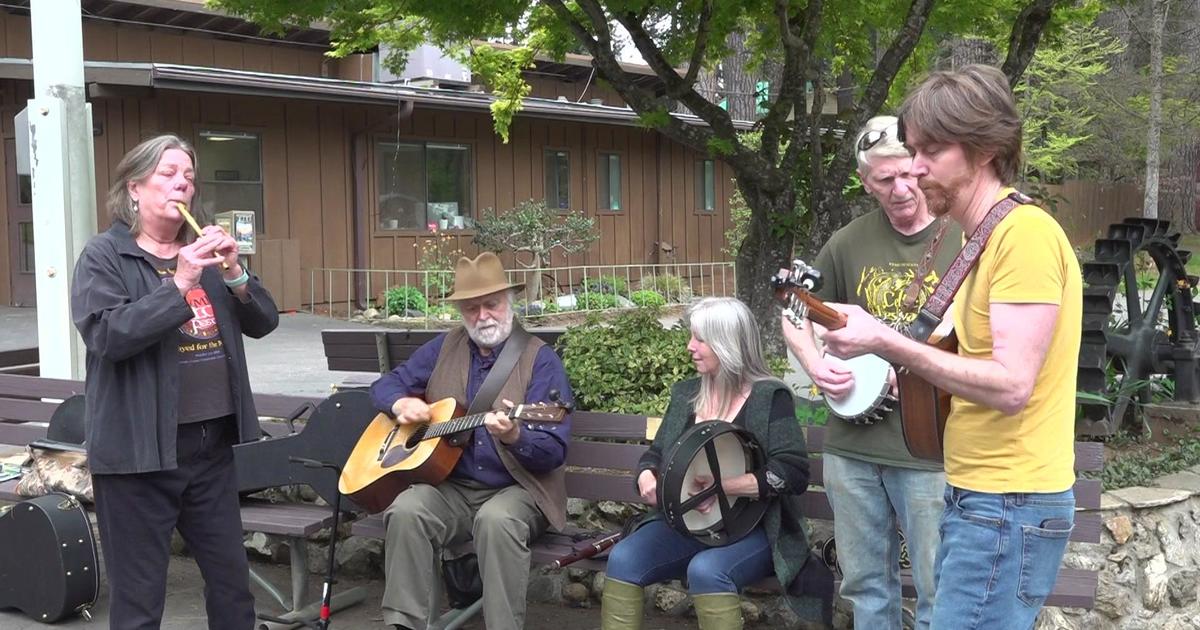California's New Normal: How The Climate Crisis Is Fueling Wildfires And Changing Life
(CNN) -- The orange glow from wildfires in the evening sky is a new way of life in the Golden State.
A lightning siege of over 12,000 strikes in 10 days ignited over 600 wildfires. Two of which have exploded into two of the top three largest wildfires in California history.
More than 1 million acres have already burned. That is an area five times the size of New York City.
Vast forests of dead trees have become tinderboxes, the result of years of warming temperatures, droughts and beetle-infestations.
Daily, millions of people across the state wake up to red-flag warnings that signal conditions ripe for fire danger.
Summer temperatures are rising well above-average. In some cases, like in Death Valley last week, to a sweltering 130 degrees Fahrenheit -- the hottest temperature recorded in the world since 1913.
"If you don't believe in climate change, come to California," tweeted California Gov. Gavin Newsom.
The climate crisis is happening now.
Here's why these deadlier and more destructive wildfires have become the new normal -- and it's all related to climate change:
It's getting hotter and hotter
Hotter temperatures mean drier land. A parched atmosphere. It's that simple.
In California, for instance, warm season days have increased by 2.5 degrees since the early 1970s, according to a study published in the journal Earth's Future.
"The clearest link between California wildfire and anthropogenic climate change thus far has been via warming-driven increases in atmospheric aridity, which works to dry fuels and promote summer forest fire," the report said.
"It is well established that warming promotes wildfire throughout the western US, particularly in forested regions, by enhancing atmospheric moisture demand and reducing summer soil moisture as snowpack declines."
Park Williams, the study's lead author and a professor at the Lamont-Doherty Earth Observatory at Columbia University, said human-caused warming of the planet has caused the vapor pressure deficit (VPD) to increase by 10% since the late 1800s, meaning that more evaporation is occurring. By 2060, he expects that effect to double.
"This is important because we have already seen a large change in California wildfire activity from the first 10%. Increasing the evaporation has exponential effects on wildfires, so the next 10% increase is likely to have even more potent effects," he told CNN last year.
VPD -- which measures dryness, or aridity, near the Earth's surface -- is directly related to the rate at which water is transferred from the land surface to the atmosphere.
In the Southwest, average temperatures have increased by 1.6 degrees Fahrenheit since the early 1900s, according to the 2017 Climate Science Special Report by the US Global Change Research program.
Earlier spring snowmelts
The California Department of Forestry and Fire Protection, or CalFire, called climate change "a key driver" of the trend of longer fire seasons.
"Warmer spring and summer temperatures, reduced snowpack, and earlier spring snowmelt create longer and more intense dry seasons that increase moisture stress on vegetation and make forests more susceptible to severe wildfire," CalFire said in its 2020 fire season outlook.
In fact, fires are causing snow to melt earlier in the season across the western US in a cycle that triggers more fires, according to a paper published in 2019 in the journal Nature Communications.
Drier conditions everywhere
Climate change has created conditions conducive to fueling the fires -- such as drier air and plant life.
In the fall, many California fires occur in coastal shrub lands and are driven by extreme wind events, such as the Santa Ana and Diablo winds.
These strong offshore winds have very low humidity, which quickly dry vegetation on the ground and spread wildfires when they occur before the onset of winter precipitation.
"Wind increases the supply of oxygen which results in the fire burning more rapidly," Cal Fire spokeswoman Mary Eldridge said. "It also removes the surface fuel moisture which increases the drying of fuel."
The fire season turns into the 'fire year'
What California officials once referred to as the "fire season" is now becoming the "fire year."
"While wildfires are a natural part of California's landscape, the fire season in California and across the West is starting earlier and ending later each year," according to Cal Fire.
"The length of fire season is estimated to have increased by 75 days across the Sierras and seems to correspond with an increase in the extent of forest fires across the state."
Additionally, the risk of blazes grows as the fire season expands from the long, dry summer into the fall months -- with intense Santa Ana and Diablo wind events increasing the ability for rapid and dangerous spread.
Outbreaks of pests weaken and kill trees
Disastrous drought conditions have converted forests into tinderboxes, leaving behind an apocalyptic landscape of dead trees -- in the millions -- and inviting bark-eating pests such as the Mountain Pine Beetle.
"Bark beetle infestations killed 7% of Western US forest area from 1979 to 2012, driven by winter warming due to climate change and by drought," according to the Fourth National Climate Assessment, a US government report.
The ravenous beetles feed off nutrients found in bark, along the way releasing pheromones that attract swarms of fellow insects, according to experts. When enough beetles lay their eggs, reproducing in even greater masses, the trees become deprived of necessary nutrients.
Climate change has contributed to the forest pest infestations, the report said -- a major cause of tree death in Southwest forests and woodlands.
Burn areas grow with climate change
The increased size of wildfires occurring across California in the last 50 years is attributable to climate change, according to a study published in Earth's Future in 2019.
Since the early 1970s, California wildfires have increased in size eightfold, the study said. The annual burned area has grown by nearly 500%.
"Increases in state-wide burned area over the last several decades were dramatically punctuated in 2017 and 2018 by particularly extreme wildfire activity with substantial loss of life and property," Park Williams, the study's lead author, said.
In 2017, almost 1.25 million acres were burned in California. That year, the Tubbs fire alone destroyed more structures than any previous wildfire in state history.
One year later, the Mendocino Complex fire consumed 459,000 acres, making it the state's largest wildfire in acreage. The cause of that fire remains under investigation.
"In these two years, the state spent over $1.5 billion, more than any previous two year period," the study said.
Cal Fire said 13 of the 20 largest fires occurred during the summer. All but one happened in the last five decades.
The World Meteorological Organization reported in 2018 that the size of fires is growing.
"The northern part of the world is warming faster than the planet as a whole," the report said. "That heat is drying out forests and making them more susceptible to burn."
The-CNN-Wire
™ & © 2020 Cable News Network, Inc., a WarnerMedia Company. All rights reserved.



